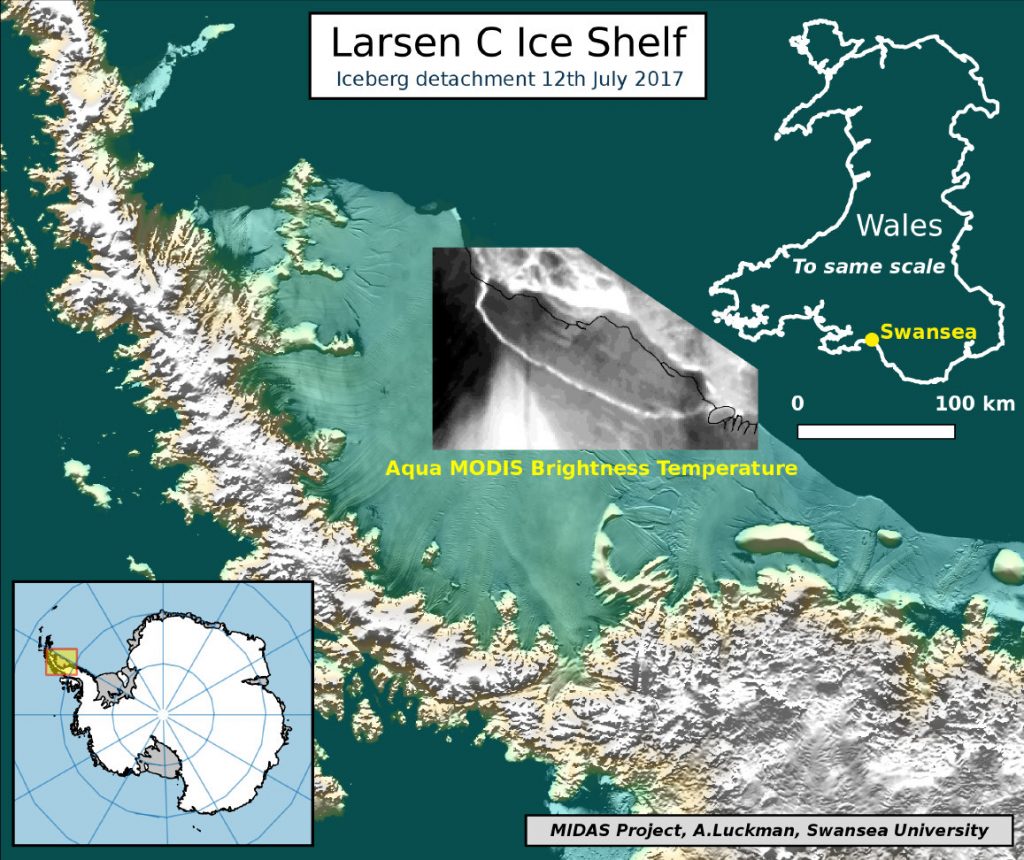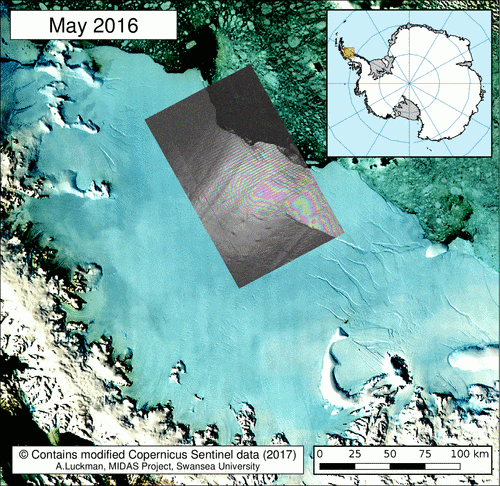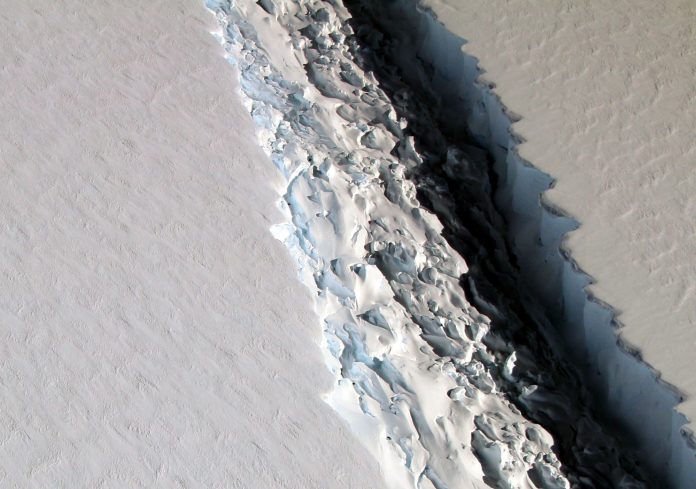For years, a deep-running chasm rippled across the snow-white horizon of Antarctica’s Larsen C ice shelf and signaled an impending and massive break-off of ice. Then Wednesday, scientists confirmed the formation of one of the largest observed icebergs in history after splitting off of the continent’s fourth largest ice shelf.
Weighing over a trillion tons and spanning 2,200 square miles in area, scientists compare the iceberg’s size to that of the state of Delaware or two Lake Eries. They plan to call it A68 pretty soon and they’re keeping an eye on it as it makes its way northward.
“The iceberg is one of the largest recorded and its future progress is difficult to predict,” said Professor Adrian Luckman of Swansea University, lead investigator of the MIDAS project. “It may remain in one piece but is more likely to break into fragments. Some of the ice may remain in the area for decades, while parts of the iceberg may drift north into warmer waters.”
The size of this calving is so large, the Project MIDAS group said it effectively shrank the Larsen C ice shelf by 12 percent. But what really has scientists worried is the potential of such a massive break-off triggering instability across the rest of the ice shelf and speeding up the rate of even more breaks. It’s something we’ve seen happen before across Antarctica’s ice shelves.

But while the size and of this break-off and the circumstances surrounding it is remarkable, some scientists are wary to pin it on climate change just yet without further research.
“I think we’re all scratching our heads as to just what combination of changes in the ice, air, and ocean caused this,” said Ted Scambos, senior research scientist with the National Snow and Ice Data Center, according to the Washington Post. “It’s unclear if this is a new trend for this area of Antarctica. The case for a climate-related cause is not nearly as good as for other areas of Antarctica.”

Wednesday’s split is the third in a series of observed large-scale break-offs in the region starting with the Larsen A ice shelf collapse in 1995. This precipitated the 2002 collapse of the Larsen B ice shelf and suggests a Southward path of large calving events across the continent. While Wednesday’s new iceberg doesn’t immediately pose a danger to sea level rise, more calving events that reach further south into Antarctica is a larger concern.
On top of that, the Larsen C ice shelf has been receding in recent years. This means glaciers depositing ice and snow onto the shelf may begin dumping that material directly into the sea, speeding up sea level rise even further.
“In the ensuing months and years, the ice shelf could either gradually regrow, or may suffer further calving events which may eventually lead to collapse – opinions in the scientific community are divided,” said Professor Adrian Luckman of Swansea University. “Our models say it will be less stable, but any future collapse remains years or decades away.”











